| Pozole -- Pork Soup | ||
 |
The
ingredients are simple: pork, hominy, chiles, onions, garlic, bay
leaves, thyme and salt. |
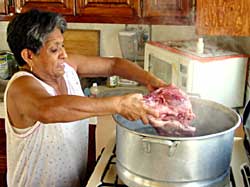 |
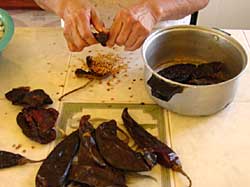 |
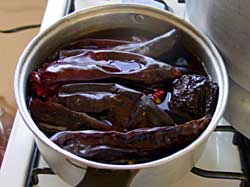 |
|
 |
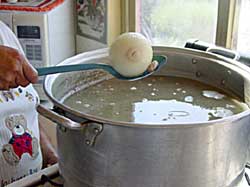 |
|
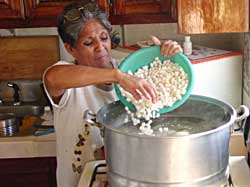 |
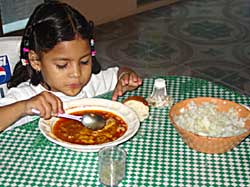 |
|
| Observer's
notes:
Doņa Martha made Asado and Pozole on consecutive days, so it was easy to make a taste comparison. I find it interesting that the ingredients for the two dishes are almost identical, yet the flavors are quite different. The asado had a strong, smoky flavor where the chiles predominated over the meat, while the pozole had a rich meaty taste with just a mild flavor from the chiles. The asado needed the companionship of rice and beans, while the pozole was a stand-alone dish. The long cooking time of the head caused it's meat to almost dissolve adding a wonderful deep rich meat flavor to the broth. The backbone cooked for a shorter time and still had a soft chunk of meat texture. This was my first home-made pozole. I like it much better than the similar dish, menudo, which uses a different part of the pig and is much spicier. Doņa Martha doesn't make menudo, She says it's too much work, and her family likes pozole better -- me too. The oregano grows wild in the nearby mountains. From time to time, the men of the family go into the mountains to harvest it. (They usually find a few rattle snakes to kill, too.) This oregano has a stronger more peppery flavor than that I used to buy in the USA. |
||
| If you wish to write to Doņa Martha, you may send an e-mail to martha@rollybrook.com | ||
| Cooking Directory | ||